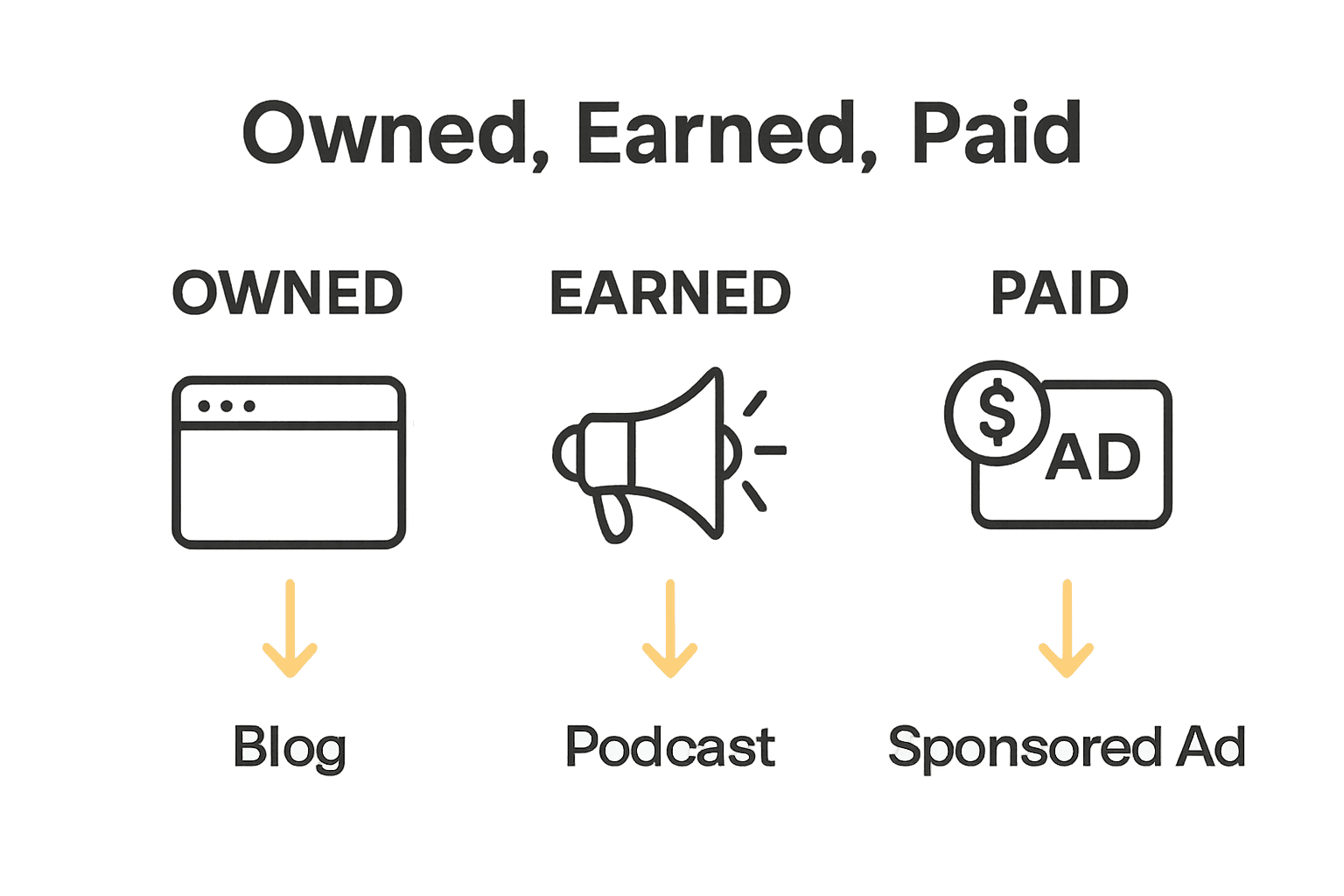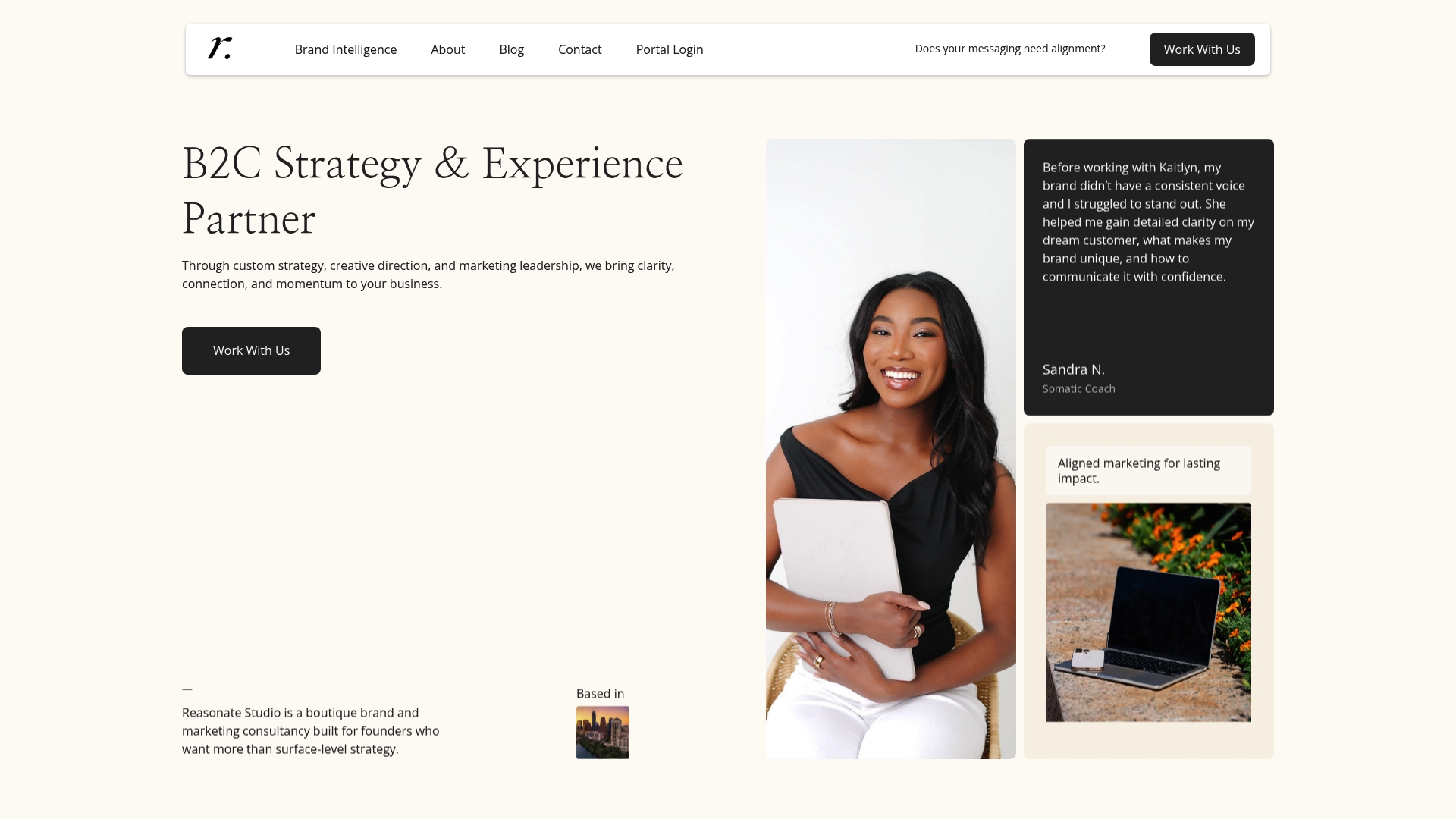Branding Strategies: Building Impactful Small Businesses

Learn how to develop a content strategy step by step, align your brand, attract ideal clients, and build sustainable marketing systems that drive real business growth.

Did you know that brands with clear identities see up to 23 percent more growth in customer trust? When your marketing feels scattered or your message struggles to land, clarity can make all the difference. By mastering the essential steps of brand foundation, audience research, and strategic content planning, you set your business up for real connection and measurable results.
Clarity is the foundation of powerful marketing. In this step, you will uncover the core elements that define your brand’s unique identity and strategic positioning.
Begin by conducting a deep introspection about who you are as a business. This means going beyond surface level descriptions and exploring your fundamental values, mission, and the specific problem you solve for your target audience. Ask yourself critical questions like: What makes my business different? What core beliefs drive my work? What unique perspective do I bring to my industry?
To map out your brand foundations effectively, break down your exploration into key components.
Here’s a summary of the key components of a strong brand foundation:
| Component | Description | Example |
|---|---|---|
| Brand Values | Core beliefs guiding decisions | Integrity Innovation Sustainability |
| Mission Statement | Purpose and impact statement | “Empower small businesses to grow sustainably” |
| Target Market | Primary audience focus | Millennials Urban professionals |
| Brand Positioning | Unique market stance | “The eco-friendly choice for conscious consumers” |
Target market identification is crucial in this process. About our target market approach can help you understand how to precisely define the specific group most likely to buy your products or services. Consider demographics like age, income, location, but also dig deeper into psychographics lifestyle, values, and behaviors that truly connect with your brand.
Your brand positioning statement will emerge from this work. It should succinctly communicate who you serve, what you offer, and why you are uniquely qualified to solve their problem. Think of it as your business personality distilled into a powerful, memorable declaration.
Pro Tip: Be brutally honest during this process. The most authentic brands are built on genuine self understanding, not marketing facades.
Once you complete these foundational exercises, you will have a clear blueprint that will guide all future marketing and communication strategies. This clarity becomes your competitive advantage, allowing you to speak directly to your ideal customers with confidence and precision.
Researching your target audience transforms generic marketing into precise conversation. In this step, you will uncover the specific group of people most likely to connect with and buy from your brand.
Start by creating a comprehensive audience persona that goes beyond basic demographics. While age, income, and location matter, the real magic happens when you understand deeper psychological drivers. What keeps your ideal customer up at night? What aspirations fuel their decisions? What language do they use when describing their challenges?
To gather these insights, leverage multiple research methods. Social media audience insights provide a wealth of information about follower behaviors and engagement patterns. About our audience research approach can help you dig deeper into understanding audience nuances. Conduct customer interviews and focus groups to uncover the emotional landscape behind your audience choices. Ask open ended questions that reveal motivations, frustrations, and dreams.
Break down your audience research into key dimensions. Map out their professional context, personal challenges, information consumption habits, and decision making triggers. Are they early adopters or more traditional consumers? Do they prefer detailed technical information or emotional storytelling? Understanding these layers helps you craft messaging that feels like a direct conversation.
Create a detailed audience persona document that captures these insights. Give this persona a name, photograph, and backstory. The more vivid and real they feel, the more effectively you can tailor your brand communication.
Pro Tip: Always validate your audience assumptions. Markets evolve quickly, so regularly refresh your research to stay connected to your customers actual needs.
By completing this deep audience research, you will have a strategic roadmap for creating content, products, and experiences that resonate powerfully with the people most likely to become your loyal customers.

Transforming your content strategy from random tactics to purposeful execution requires setting clear strategic goals. In this step, you will establish measurable objectives that directly connect your content efforts to meaningful business outcomes.
Start by aligning your content goals with broader business objectives. This means moving beyond vanity metrics and focusing on goals that truly impact your bottom line. Are you looking to reduce customer support costs? Increase product acquisitions? Drive brand awareness? Your content goals should be laser focused on these specific outcomes.
Adopt the SMART framework when defining your goals. This means creating objectives that are Specific, Measurable, Achievable, Relevant, and Time bound. Instead of vague statements like “grow our audience,” craft precise goals such as “increase website traffic by 25% in the next quarter” or “generate 50 qualified leads per month through our blog content.”
Blog guide on strategic goal setting can provide additional insights into creating robust content objectives. Select three primary key performance indicators (KPIs) that will serve as your north star metrics. These might include website traffic, newsletter sign ups, lead conversion rates, or engagement metrics specific to your business model.
Be intentional about tracking both quantitative and qualitative metrics. Numbers tell part of the story, but customer feedback and sentiment provide deeper understanding. Set up systems to capture not just how many people interact with your content, but how they feel about it and what actions they take afterward.
Pro Tip: Review and recalibrate your content goals quarterly. Markets shift quickly, and your strategy must remain flexible and responsive.
By establishing clear, measurable content goals, you transform your marketing from guesswork to a strategic, data driven approach that delivers predictable results. Your content becomes a precise tool for achieving specific business outcomes, not just another marketing expense.
Your content strategy becomes truly powerful when it speaks directly to customers at each stage of their decision making process. In this step, you will create a strategic map that guides potential customers from initial awareness to final purchase.
Understand the buyer journey as a progression through three critical stages awareness, consideration, and decision. In the awareness stage, your content should address broad challenges and introduce potential solutions. Think educational blog posts, informative videos, and industry trend analyses that demonstrate you understand your audience’s fundamental problems.
During the consideration stage, prospects are actively exploring solutions. About our content strategy approach highlights the importance of creating comparative content that helps buyers evaluate options. Develop in depth guides, case studies, webinars, and detailed comparison resources that showcase your unique value proposition.
The decision stage requires content that provides final reassurance and compels action. Here, use testimonials, product demonstrations, free trials, and detailed implementation guides that remove final purchase barriers. Your content should answer the critical question: Why choose us over alternatives?
Create a content matrix that explicitly links each piece of content to a specific buyer journey stage and business goal. This ensures your content ecosystem works as an integrated system, not isolated tactics. Track how different content pieces influence progression through the funnel by monitoring metrics like engagement time, return visits, and conversion rates.
Pro Tip: Always include clear calls to action that match the buyer journey stage. A consideration stage piece should invite further exploration, while a decision stage piece should prompt immediate action.
By meticulously mapping content to the buyer journey, you transform your marketing from a monologue into a responsive conversation that guides potential customers precisely when and how they need guidance.
A strategic content calendar transforms random marketing efforts into a synchronized, purposeful system. In this step, you will design a comprehensive content roadmap that ensures consistent messaging across multiple channels while maximizing your audience engagement.
Begin by categorizing your content channels into three primary groups owned, earned, and paid platforms. Owned channels include your website, blog, and email newsletters where you have complete control. Earned channels involve third party platforms like social media, industry publications, and podcasts where you can generate organic visibility. Paid channels encompass advertising spaces like Google Ads, sponsored content, and targeted social media promotions.
Blog guide on content planning can provide additional insights into channel selection. Prioritize channels based on where your specific target audience spends the most time. A B2B technology audience might engage differently compared to a consumer lifestyle market. Research platform demographics, engagement rates, and content consumption patterns to make informed decisions.
Develop a content calendar that spans three to six months, allowing flexibility while maintaining strategic direction. Include key details for each content piece such as topic, target buyer journey stage, primary channel, publication date, and associated goals. Use a shared digital tool that enables collaboration and provides visibility across your team.
Customize content formats for each selected channel. A long form blog post might be repurposed into shorter social media snippets, an email newsletter highlight, or a podcast discussion point. This approach maximizes content efficiency and reaches audiences through their preferred consumption methods.

Pro Tip: Build buffer time into your calendar for unexpected opportunities or necessary pivots. Flexibility is key in content strategy.
By creating a thoughtful, comprehensive content calendar, you transform marketing from scattered tactics to a unified, strategic approach that consistently nurtures potential customers through their entire buying journey.
Measuring your content strategy is not about collecting data its about uncovering meaningful insights that drive continuous improvement. In this step, you will transform raw metrics into actionable intelligence that propels your marketing forward.
Develop a comprehensive measurement approach that balances leading and lagging indicators. Leading indicators like scroll depth, time on page, and click through rates reveal how audiences interact with your content. Lagging indicators such as demo requests, deals influenced, and direct revenue attribution demonstrate the deeper business impact of your content strategy.
Blog guide on performance tracking can provide additional insights into effective measurement techniques. Build performance dashboards before creating content, ensuring you have clear visibility into key metrics from the start. These dashboards should track engagement progression, conversion rates, and precise revenue attribution.
Implement a regular review cycle typically monthly or quarterly to assess content performance. Focus on a small number of meaningful KPIs rather than drowning in data. Compare actual results against your original strategic goals. Which content pieces generated the most qualified leads? What topics triggered the highest engagement? Where did potential customers drop off in their journey?
Create a systematic approach to content optimization. When certain topics or formats consistently outperform others, double down on those strategies. Equally important is identifying and retiring content that fails to deliver value. Your content strategy should be a living system that constantly evolves based on real world performance.
Pro Tip: Dont just look at aggregate numbers. Dive into audience segments to understand how different customer groups interact with your content.
By treating measurement as a continuous improvement process, you transform your content strategy from a static plan into a dynamic engine of growth that becomes more sophisticated and effective with each iteration.
Building a content strategy that actually moves the needle is harder than it looks. Maybe you feel stuck after clarifying your brand foundations or overwhelmed by the idea of mapping content to your entire buyer journey. It’s easy to pour effort into blogs and social channels and still wonder if any of it truly aligns with your business growth goals. You want more than surface-level fixes. You need a clear, proven system that brings every marketing action back to what really matters—your brand’s purpose, your audience’s needs, and measurable results.

Stop guessing and start growing with Reasonate Studio. Our signature Aligned Impact Model streamlines the process from defining your core message to building out a content calendar that supports long-term scale. Don’t let random tactics hold your business back. Discover how partnering with us gives you the clarity, strategic focus, and confidence to move forward, whether you want to build a meaningful content plan or transform your marketing from the ground up. Explore how to make your next step the most intentional one yet at https://reasonatestudio.com. Now is the perfect time to align your content with the future you want to build.
Start by identifying your core values, mission statement, target market, and brand positioning. Conduct a deep introspection about your business’s unique identity and what sets you apart to create a strong foundation for your content strategy.
Create a comprehensive audience persona that includes demographics, psychographics, and specific challenges your ideal customer faces. Engage in customer interviews or focus groups to gather detailed insights that can help tailor your content to their needs.
Use the SMART framework to define content objectives that are Specific, Measurable, Achievable, Relevant, and Time-bound. For instance, aim to increase website traffic by 25% within the next quarter to ensure your content efforts directly impact your business growth.
Organize your content into three stages: awareness, consideration, and decision. Ensure that each piece of content addresses the specific needs of customers at each stage, providing valuable information that guides them through their buying process.
Develop a content calendar that plans your content across multiple channels for the next three to six months. Include details such as publication dates, target buyer journey stages, and content formats, ensuring that all messaging remains consistent and aligned with your strategy.
Focus on both leading metrics, like engagement rates and time on page, and lagging metrics, like demo requests or revenue attribution. Regularly assess these metrics to identify which content drives results and refine your strategy accordingly.